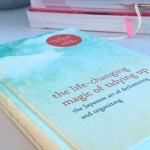The Trouble With Trial Sizes (And What You Can Do About It)
The Case Against Trial Sizes
Driving trial is critical for the success of any new product launch. So, it’s no surprise that many marketers turn to trial sizes in order to help boost this all-important metric. But are trial sizes really the right choice when looking to propel a new product to success?
Trial sizes make sense in theory. The idea is to give consumers an incentive to try a product with less of a commitment (smaller size and price) in hopes that they like it enough to become repeat purchasers of the full-size product.
However, while trial sizes tend to succeed at driving up the number of total units sold, they often end up having a net negative impact on the overall business. Why is that?
Research shows that unlike other trial-generating promotional tools, trial sizes tend to cannibalize the overall business. That’s because they give shoppers who would have been willing to buy a full-size product a chance to trade down to a much smaller and cheaper version instead—and far too many consumers are more than willing to take full advantage of that opportunity.
Another drawback is that shoppers that regularly gravitate towards trial sizes tend to be value-seekers who have lower brand/product loyalty than full-size purchasers—meaning these consumers end up being much less profitable for your brand in the long run.
I Hear You, But…
Despite the evidence that trial sizes are bad for business, there are certainly exceptions that lead some marketers to include them in their promotional mix. The good news is that there are several things you can do in these situations to maximize the positive impact (and minimize the negative impact) that trial sizes have on a business.
• Drop trial sizes early so that they have the best chance to build trial without cannibalizing repeat purchases.
• Limit the number of trial size units and the length of the sell-through period so that consumers are encouraged to trade-up to the full-size product over time rather than continue to buy the trial size.
• Make the price-per-volume greater for the trial size than the full-size product so that consumers aren’t able to buy the smallest volume at the best price.
• Keep the price relatively high to prevent attracting non-loyal consumers.
• Make sure any coupons dropped are NOT redeemable on trial sizes—the lower absolute price should be more than enough of an incentive.
The Final Verdict
Marketers should say no to trial sizes whenever possible. There are too many other promotional tools—like samples, coupons, displays and feature ads—that effectively drive trial without the negative side effects. However, if extenuating circumstances dictate that trial sizes must be used, just follow the tips above and you’ll be able to make the most out of the initiative.
I’d love to hear about your personal experiences with trial sizes. Do you think they can have a positive role in a new product’s promotional mix? Or do the tradeoffs outweigh the benefits? Comment below or connect with me on LinkedIn to continue the discussion.
Adam Siegel is a Creative Director at Seed Strategy where he draws upon his diverse experience in advertising, research and innovation to craft breakthrough creative and winning concept copy.
Connect with us! Follow Seed Strategy on our LinkedIn, Twitter, Facebook and Instagram pages.










